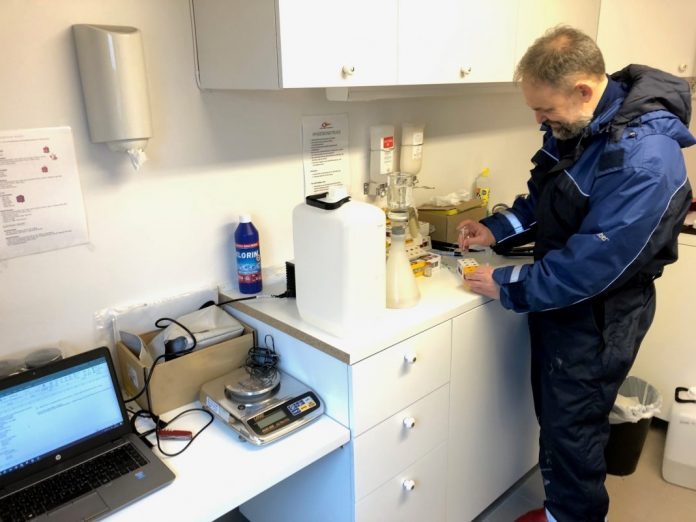Mass salmon mortalities in RAS plants show that land-based salmon farming requires new expertise in microbiology. However, toxic gas is not new. It is well known in the oil industry.
Much publicised cases of salmon deaths in RAS sites demonstrate that the industry is facing new biological challenges. High degrees of recirculation puts pressure on water quality, and the construction of RAS plants therefore requires expertise in microbiology. To ensure safe implementation of these kind of projects, Sterner has obtained assistance from the oil industry.
“In some RAS plants sulfur gas has been formed, which originates from natural sulfate-reducing bacteria. The gas can build up in bacterial coatings inside the plant over time. Under certain conditions, the gas is released, with a result that ends with the fish dying immediately,” said Anthony Dinning, who leads Stern’s water quality department in RAS systems.
Oil industry
Dinning holds a doctorate in microbiology and has for twenty years worked to prevent unwanted bacteria in the industry. He has also assisted companies to avoiding gas formation in oil reservoirs.
“The oil industry uses seawater to maintain pressure in the reservoir. If the seawater is not of the right quality, bacteria will flourish, degrade the oil and destroy resources. This expertise can benefit the aquaculture industry,” explained Dinning, who two years ago got the job of mapping several RAS sites, just to look at the risk of gas formation.
“Sterner has not had any cases. Everything indicates that the right design and good water treatment has provided it. As head of Stern’s water quality department, my job is to make sure it doesn’t happen either,” said Dinning in a press release.
Demand
Sulfur bacteria is found in both freshwater and seawater. Although if there are lower sulphate concentrations in fresh water, it will be able to build up large amounts of sulphide over time. This means that some operators believe that they do not need the same routines in operating systems using fresh water. This is a false security and may result in increased risk of gas-related incidents.
“It is impossible to prevent bacteria from accessing the plant. In seawater, there is more sulfate, but removing it by using membranes, for example, does not increase safety. Sediments can also be fertile, if these are detached and the gas enters the water phase, this could result in fish deaths,” explained Dinning.

Industrial
The construction of RAS plants have increased dramatically in recent years and Sterner is experiencing demand. In Norway, post-smolt farms for salmon in particular are being built, while all kinds of fish are exported abroad. A number of inquiries have also been made from new players in Europe who are planning to build RAS farms.
“They are examining us carefully. It is not enough that we have built RAS facilities for twenty years, they are looking for industry expertise and are concerned about how many engineers and what CVs they have in our organisation. They also ask us about our bioreactors and solutions in water chemistry,” said Øyvind Aaleskjær, who himself comes from the consulting group Cowi, where he was as an adviser to the aquaculture industry.
A year ago, together with Stian Johnsen, he was brought to Sterner from Schlumberger’s oil and gas department to head up its aquaculture department.
Compromises
Aaleskjær said that non-Norwegian customers in general like to have ready-made solutions. But Nordic ones often want a bespoke service, both on the function and design of the site.
“Twenty years of experience lies in Sterner’s technology. Changing, for example, the geometry of the site means that the energy requirement changes, with consequences for the water quality, the solids content in the sewage sludge, the need for aeration and conditions for the bio-filter and so on. We have reduced the biofilters to almost a quarter of the volume from twenty years ago. Energy demand is thus halved and we achieve better sludge. All parts play together. Therefore, compromises can be expensive,” said Aaleskjær.

